Flexor digitorum superficialis muscle
Table of Contents
Description
The flexor digitorum superficialis (FDS) is a muscle located in the forearm that plays an important role in flexing the fingers. It originates from the medial epicondyle of the humerus (upper arm bone) and the coronoid process of the ulna (one of the forearm bones) and runs down the forearm, attaching to the middle phalanges (bones in the middle of the fingers) of the second, third, fourth, and fifth digits (fingers).
The FDS is innervated by the median nerve and works in conjunction with the flexor digitorum profundus (FDP) muscle, which is located deeper in the forearm, to flex the fingers. When both muscles are contracted together, they produce a strong grip, making the FDS an important muscle for grasping objects and performing other fine motor movements with the hands.
The flexor digitorum superficialis muscle is responsible for flexing the fingers at the proximal interphalangeal (PIP) joint and the wrist.
It is stimulated by the median nerve and receives its blood supply from the ulnar and radial arteries. The flexor digitorum superficialis muscle is one of the two flexor muscles of the forearm that flex the fingers (the other is the flexor digitorum profundus).
It works in conjunction with the flexor pollicis longus muscle to produce a gripping motion of the hand. Dysfunction of the flexor digitorum superficialis muscle can lead to difficulty flexing the fingers and weakened grip strength.
Structure of flexor digitorum superficial
- The flexor digitorum superficialis muscle is a long, slender muscle that is located in the anterior compartment of the forearm.
- It has a fusiform shape, meaning that it is wider in the middle and tapers towards the ends.
- The muscle belly is divided into two parts by a central tendon.
- The two parts of the muscle attach to different areas on the bone of the forearm, with the medial part attaching to the coronoid process of the ulna and the lateral part attaching to the radius and the radial collateral ligament.
- The muscle fibers of the flexor digitorum superficialis muscle run parallel to each other and are oriented in a longitudinal direction along the forearm.
- The muscle fibers are arranged in several fascicles that are bound together by connective tissue.
- The muscle belly gives rise to four tendons that pass through the carpal tunnel and attach to the middle phalanges of the four fingers (index, middle, ring, and little fingers).
- These tendons are surrounded by synovial sheaths, which help to reduce friction between the tendon and surrounding tissues.
- The flexor digitorum superficialis muscle is innervated by the median nerve, which originates from the brachial plexus.
- The blood supply to the muscle is provided by the ulnar and radial arteries.
Origin and insertion
The flexor digitorum superficialis muscle originates from two distinct areas:
Medial epicondyle of the humerus:
This is a bony projection on the inner side of the elbow joint.
Coronoid process of the ulna and the radial collateral ligament:
- The coronoid process is a triangular projection on the anterior surface of the ulna bone, and the radial collateral ligament is a band of connective tissue that connects the radius bone to the ulna bone.
- From these origins, the muscle fibers of the flexor digitorum superficialis muscle run down the forearm and form four tendons that insert into the middle phalanges of the four fingers (index, middle, ring, and little fingers).
- Specifically, the tendons of the muscle insert into the base of the middle phalanges of the fingers, just proximal to the proximal interphalangeal (PIP) joint.
It’s important to note that the tendons of the flexor digitorum superficialis muscle pass through the carpal tunnel, along with the tendons of other muscles, before they reach the fingers.
Blood supply of the Flexor digitorum superficialis muscle
The blood supply of the flexor digitorum superficialis muscle comes from the ulnar and radial arteries, which are the major arteries of the forearm.
The ulnar artery is the larger of the two and runs down the medial side of the forearm. It gives off several branches, including the common interosseous artery, which divides into the anterior interosseous artery and the posterior interosseous artery. The anterior interosseous artery supplies blood to the deep flexor muscles of the forearm, including the flexor digitorum profundus.
The radial artery runs down the lateral side of the forearm and gives off several branches, including the radial recurrent artery, which supplies blood to the lateral aspect of the elbow joint, and the palmar carpal branch, which supplies blood to the wrist joint.
The blood vessels supplying the flexor digitorum superficialis muscle penetrate the muscle belly at various points along its length, providing the necessary oxygen and nutrients to the muscle tissue for proper function.
Nerve supply
The flexor digitorum superficialis muscle is innervated by the median nerve, which is one of the major nerves of the upper limb.
The median nerve arises from the brachial plexus, which is a network of nerves that originates from the spinal cord in the neck and supplies the upper limb. The median nerve passes through the arm and forearm before entering the hand, where it supplies sensation to the skin of the thumb, index finger, middle finger, and half of the ring finger.
In addition to providing sensory innervation, the median nerve also supplies motor innervation to the flexor muscles of the forearm, including the flexor digitorum superficialis. When the median nerve is stimulated, the muscle fibers of the flexor digitorum superficialis contract, causing flexion of the wrist and fingers.
Functions of flexor digitorum superficialis muscle
The flexor digitorum superficialis muscle has several important functions:
Finger Flexion:
- The main function of the flexor digitorum superficialis muscle is to flex the fingers at the proximal interphalangeal (PIP) joint.
- This means that the muscle helps to bend the middle joints of the index, middle, ring, and little fingers, allowing them to curl towards the palm of the hand.
Wrist Flexion:
- In addition to flexing the fingers, the flexor digitorum superficialis muscle also contributes to the flexion of the wrist.
- When the muscle contracts, it helps to bend the wrist joint, bringing the hand closer to the forearm.
Grip Strength:
- The flexor digitorum superficialis muscle is an important contributor to grip strength.
- By flexing the fingers, the muscle helps to bring the hand into a grasping position, allowing us to hold onto objects securely.
Fine Motor Control:
- The muscle plays an important role in fine motor control of the hand.
- By contracting the muscle in a controlled manner, we can move our fingers with precision, allowing us to perform tasks such as typing, playing musical instruments, and manipulating small objects.
Overall, the flexor digitorum superficialis muscle is an important muscle for hand and finger function, playing a crucial role in activities that require both strength and fine motor control.
Associated conditions
The flexor digitorum superficialis muscle can be affected by several conditions, including:
Tendinitis:
- Overuse or repetitive strain can lead to inflammation and irritation of the tendons of the flexor digitorum superficialis muscle.
- This condition is known as tendinitis and can cause pain and discomfort in the affected fingers.
Carpal Tunnel Syndrome:
- The tendons of the flexor digitorum superficialis muscle pass through the carpal tunnel, which is a narrow passageway in the wrist.
- In some cases, pressure or compression on the median nerve that also runs through the carpal tunnel can lead to a condition called carpal tunnel syndrome.
- This can cause pain, numbness, and tingling in the fingers and hand.
Trigger Finger:
- In some cases, the tendons of the flexor digitorum superficialis muscle can become inflamed and irritated, causing them to catch or “lock” in the sheaths that surround them.
- This can lead to a condition known as the trigger finger, which can cause pain, stiffness, and difficulty moving the affected finger.
Flexor Tendon Injuries:
- Injuries to the tendons of the flexor digitorum superficialis muscle can occur as a result of trauma, such as a deep cut or laceration to the palm or wrist.
- These injuries can result in partial or complete tears of the tendon, which can cause significant pain, weakness, and limited hand function.
Dupuytren’s Contracture:
- This is a condition in which the connective tissue in the palm of the hand becomes thickened and contracted, causing the fingers to curl inward towards the palm.
The flexor digitorum superficialis muscle can be affected by this condition, leading to limited finger movement and hand function.
Diagnosis
Diagnosing a problem with the flexor digitorum superficialis muscle usually involves a physical examination and a review of the patient’s medical history. The following diagnostic tests may be ordered to confirm a suspected problem with the muscle:
X-rays:
X-rays may be ordered to assess the bones and joints of the hand and wrist for any abnormalities or signs of injury.
Ultrasound:
An ultrasound may be ordered to assess the tendons and soft tissues of the hand and wrist for any signs of inflammation or damage.
Magnetic Resonance Imaging (MRI):
An MRI may be ordered to obtain detailed images of the hand and wrist to help diagnose problems such as tendon injuries or carpal tunnel syndrome.
Electromyography (EMG):
This test involves the insertion of small needles into the muscle to assess its electrical activity. EMG may be used to diagnose muscle or nerve disorders affecting the flexor digitorum superficialis muscle.
Nerve Conduction Study (NCS):
This test measures the speed and strength of electrical signals in the nerves and muscles and may be used to diagnose nerve disorders affecting the flexor digitorum superficialis muscle.
Based on the findings of these tests, the healthcare provider can make a diagnosis and develop an appropriate treatment plan.
Differential diagnosis
The flexor digitorum superficialis (FDS) is a muscle located in the forearm that flexes the fingers. A differential diagnosis is a process of identifying possible medical conditions that could be causing a patient’s symptoms. There are a few conditions that may be considered in the differential diagnosis of FDS muscle issues, including:
FDS muscle strain or tear:
- Injury to the FDS muscle can result in strain or tear, which can cause pain and weakness in the affected area.
Carpal tunnel syndrome:
- This condition occurs when the median nerve, which runs through the carpal tunnel in the wrist, becomes compressed.
- Symptoms include pain, numbness, and tingling in the hand and fingers, which can affect the FDS muscle.
Tendinitis:
- Tendinitis is an inflammation of the tendon that can cause pain and stiffness in the affected area.
- It can affect the FDS muscle, particularly in athletes or people who engage in repetitive gripping or wrist movements.
Trigger finger:
- A trigger finger occurs when the tendon that controls the movement of the finger becomes inflamed or irritated, causing the finger to lock or catch. This can affect the FDS muscle.
Dupuytren’s contracture:
- This condition occurs when the tissue under the skin in the palm of the hand thickens and tightens, causing the fingers to curl inward.
- This can affect the FDS muscle and limit its range of motion.
Pronator teres syndrome:
- This condition occurs when the median nerve becomes compressed in the forearm, causing pain and weakness in the affected area.
- It can affect the FDS muscle and other muscles in the forearm.
Radial tunnel syndrome:
- This condition occurs when the radial nerve becomes compressed in the forearm, causing pain and weakness in the affected area.
- It can affect the FDS muscle and other muscles in the forearm.
It’s important to consult a healthcare professional for an accurate diagnosis and appropriate treatment of any suspected medical condition.
Treatment of flexor digitorum superficial muscle pain
The treatment of the flexor digitorum superficialis (FDS) muscle depends on the underlying cause of the problem. Here are some usual treatment options that can be suggested:
Rest and ice:
If the FDS muscle is strained or injured, rest and ice may be recommended to help reduce pain and inflammation.
Physical therapy:
Physical therapy may be recommended to improve flexibility and strength in the affected area. Specific exercises may be prescribed to target the FDS muscle and other muscles in the forearm.
Medications:
Over-the-counter pain relievers, such as acetaminophen or nonsteroidal anti-inflammatory drugs (NSAIDs), may be recommended to help manage pain and inflammation.
Splinting:
Splinting or bracing may be recommended to help immobilize the affected area and reduce strain on the FDS muscle.
Injections:
Corticosteroid injections may be recommended to help reduce pain and inflammation in the affected area.
Surgery:
In some cases, surgery may be recommended to repair a torn FDS muscle or to relieve compression of a nerve in the forearm.
It’s important to consult a healthcare professional for an accurate diagnosis and appropriate treatment plan for any suspected FDS muscle issue.
Physiotherapy exercise
Here are some physiotherapy exercises that may be recommended to target the flexor digitorum superficialis (FDS) muscle:
Finger Flexion and Extension:
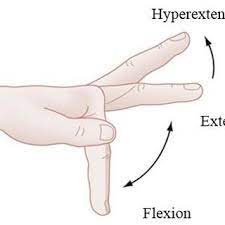
- This exercise involves flexing and extending your fingers.
- Start by holding your hand palm down on a table or flat surface.
- Slowly curl your fingers into your palm, squeezing them together tightly, and then slowly straighten them out again.
- Repeat for several repetitions.
Finger Walking:
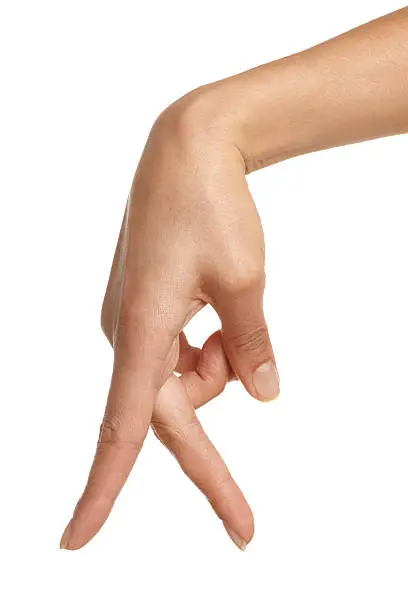
- This exercise involves walking your fingers along a flat surface.
- Place your hand palm down on a table or flat surface.
- Slowly walk your fingers forward, keeping them straight and close together.
- Once your fingers have reached as far forward as possible, slowly walk them back to the starting position.
- Repeat for several repetitions.
Grip Strengthening:
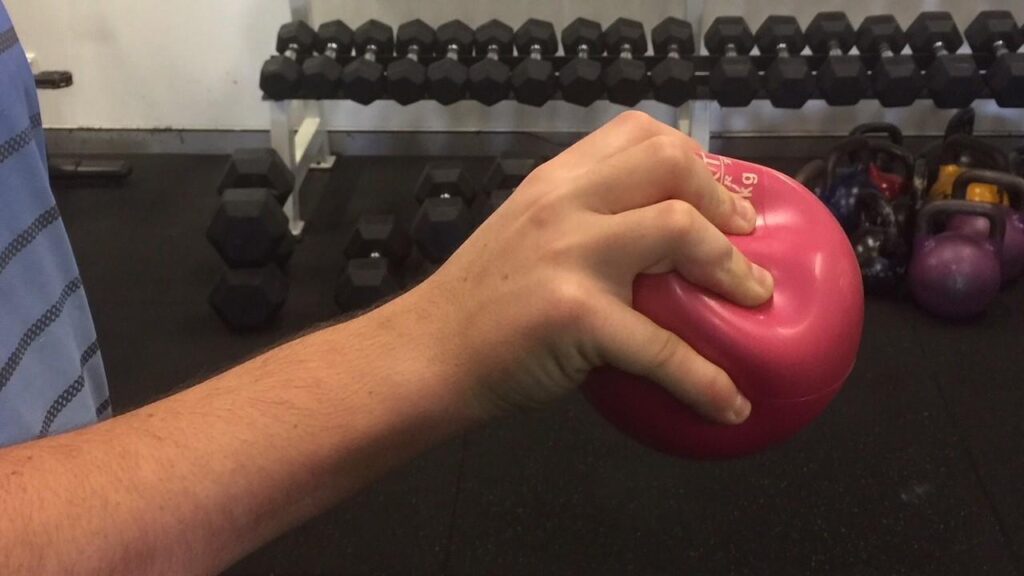
- This exercise involves squeezing a soft ball or other hand grip device.
- Hold the object in the palm of your hand and squeeze it tightly, holding the contraction for a few seconds before releasing it.
- Repeat for several repetitions.
Wrist Flexor Stretch:
- This exercise involves stretching the wrist flexor muscles, including the FDS muscle.
- Start by holding your arm straight out in front of you, with your palm facing down.
- Use your other hand to gently pull your fingers back towards your wrist, feeling a stretch in your forearm.
- Hold the stretch for several seconds before releasing. Repeat on the other arm.
It’s important to consult a healthcare professional or physiotherapist for an accurate diagnosis and appropriate exercise plan for any suspected FDS muscle issue. They can provide guidance on specific exercises and techniques that are appropriate for your individual needs and goals.
Strengthening exercise
Here are some strengthening exercises that may be recommended to target the flexor digitorum superficialis (FDS) muscle:
Wrist Curls:

- This exercise involves holding a lightweight, such as a dumbbell, in your hand and bend your wrist upward, then slowly lowering the weight back down.
- Do 3 sets of 10-12 repetitions.
Reverse Wrist Curls:

- This exercise involves holding a lightweight, such as a dumbbell, in your hand and bend your wrist downward, then slowly lifting the weight back up.
- Do 3 sets of 10-12 repetitions.
Resistance Band Finger Flexion:
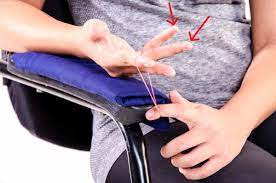
- This exercise involves wrapping a resistance band around your fingers and gently pulling the band outward to flex your fingers.
- Do 3 sets of 10-12 repetitions.
Grip Strengthening with a Grip Strengthener:

- This exercise involves using a grip strengthener to strengthen your grip.
- Hold the grip strengthener in the hand and squeeze it tightly, holding the contraction for a few seconds before releasing.
- Do it further for five sets of ten to fifteen repetitions.
Pinch Gripping:

- This exercise involves holding a small object, such as a clothespin or small ball, between your fingers and thumb, and squeezing it tightly.
- Maintain the contraction for 20 seconds before releasing.
- Do it further for five sets of ten to fifteen repetitions.
Remember to begin with lighter weights or resistance bands and gradually improve as you get stronger.
It’s important to consult a healthcare professional or physiotherapist for an accurate diagnosis and appropriate exercise plan for any suspected FDS muscle issue. They can provide guidance on specific exercises and techniques that are appropriate for your individual needs and goals.
FAQ
FDS muscle pain or injury can be caused by a variety of factors, including overuse, strain, or injury from a fall or impact.
Symptoms of FDS muscle pain or injury may include pain, stiffness, weakness, and difficulty moving the affected fingers.
Yes, exercises such as wrist curls, reverse wrist curls, resistance band finger flexion, grip strengthening, and pinch gripping may help strengthen the FDS muscle.
The length of time it takes for the FDS muscle to heal depends on the severity of the injury and the individual’s overall health. Mild strains or injuries may heal within a few days or weeks with rest and treatment, while more severe injuries may require several months of treatment and rehabilitation.
The FDS muscle itself does not cause carpal tunnel syndrome. However, repetitive use or strain of the FDS muscle can lead to inflammation and swelling in the surrounding area, which can compress the median nerve that passes through the carpal tunnel in the wrist. This can lead to the development of carpal tunnel syndrome.


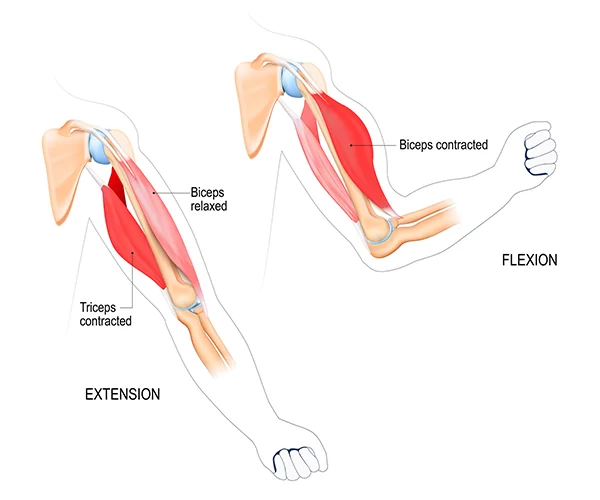
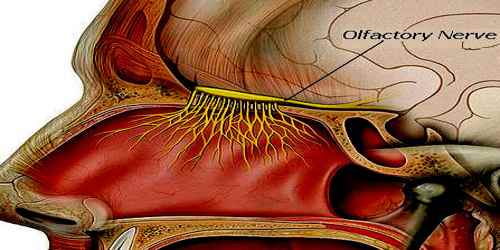
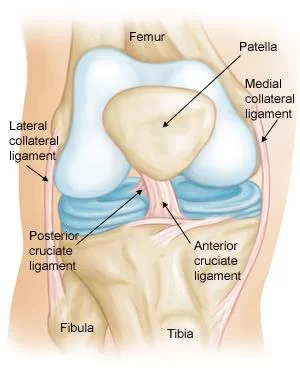

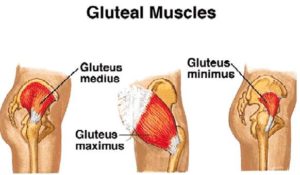

7 Comments